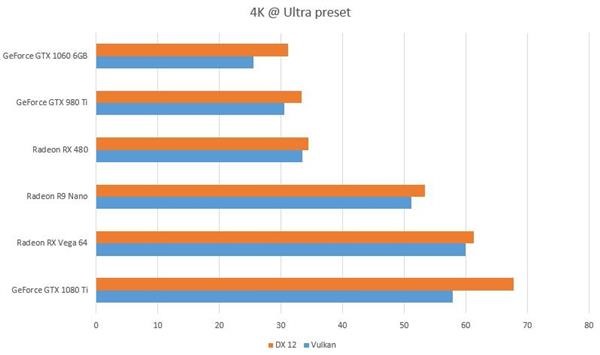
The new title of Rebellion Developments, Strange Brigade, goes on sale today and as usual we are going to show you its graphic performance with the entire array of AMD and NVIDIA graphics cards that we have, so that we can know how the graphics render of both manufacturers in this new title.
To test this game, we have used our usual test bench, consisting of the following hardware:
Intel Core i7 8700K @ stock clock speed
MSI Z370 Gaming M5, used in MSI Vortex G25
2 × 8 GB G.Skill Sniper X DDR4 3600 Mhz
Corsair MP500 480 GB M.2 PCI-Express NVMe.
Corsair RM1000i.
And in this case, this is the list of graphic cards that we had available to perform the tests (we have removed some of the oldest or least powerful, and added the new ones that we have been getting):
AMD Radeon RX Vega 64 (Built by AMD, reference model).
AMD Radeon R9 Nano.
AMD Radeon RX 480 (Built by AMD, reference model).
MSI GeForce GTX 980 Ti Gaming X.
NVIDIA GeForce GTX 1060 6 GB Founders Edition (Built by NVIDIA).
MSI GeForce GTX 1080 Ti Gaming X.
In all cases, the data shown is the average FPS obtained with the internal benchmark of the game, in this case for both the Vulkan and DirectX 12 graphics API, measured at both Full HD (1920 x 1080) and Ultra HD resolution (3840 x 2160). In the case of NVIDIA graphics cards we have used the latest available drivers, GeForce 399.07 WHQL ) and in the case of AMD, also the latest available (Radeon Software 18.8.2 BETA).
It is worth mentioning that Rebellion Games and AMD have worked closely in the development of Strange Brigade to offer the best performance with AMD graphics, and we must mention the fact that the title, in addition to being compatible with Vulkan, can also be configured with HDR (and of course FreeSync).
These have been the graphic adjustments used in the tests:

As you can see, in Strange Brigade it seems that even AMD graphics cards behave better with the DirectX 12 graphics API than with Vulkan. However, in all cases the AMD and NVIDIA graphics from our test bench have presented an excellent performance in Full HD resolution, with the graphic settings in Ultra (only Motion Blur deactivated).
And if we go to Ultra HD resolution the thing changes a lot and the Radeon Vega 64 steals the hegemony to the all-powerful (until now) GTX 1080 Ti, obtaining a higher frame rate per second with the Vulkan API. In any case, only the Vega 64 has been able to stay above 60 FPS in all tests, because even the 1080 Ti has dropped to 57 using the Vulkan API at this resolution.
